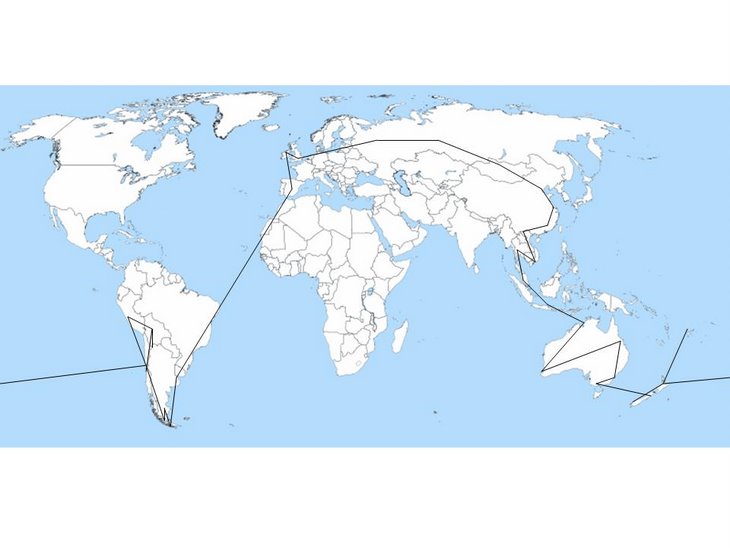When I arrived in Auckland I had no real plan what I was going to do or how I was going to get to Christchurch by April 22nd. Upon leaving the airport I boarded a bus bound for the city centre and the driver dropped me off at Auckland Backpacker Central, the largest hostel in the city.
I checked in and went to the dorm where I met Paul and Jonny (both from Germany). They had also just arrived in Auckland a few hours prior to me and had no real plan. We went for a few beers and by the time we were finished we had decided to rent a camper van and travel down south together. We set about organising everything - a real adventure was about to begin.
Firstly we headed up north to the Bay of Islands and Paihia and KeriKeri. This is where the treaty was signed between representatives of Queen Victoria nad the Maori people in 1840....essentially the birthplace of New Zealand. It started raining very heavy, so were were unable to go out to the islands, but we did check out the treaty house and grounds to gain an insight into Maori history and culture. It was still raining, so we stopped of at the Cottle Hill Winery to sample the local Merlot. Not bad!
We then drove back down to Auckland and on to Hamilton, where we stoped off at a waterworld complex for some water activities. We drive further on to Rotarua, where there are natural thermal springs and geysers. We stay overnight at a campsite and enjoy the hot springs. The next day our trip takes us to one called Hell's Gate, named due to the high geothermic activity in the  area - explosive pools of mud, boiling pools of water with steam evaporating across the landscape, and a mini volcano spouting hot mud... Very impressive, but it still hadn't stopped raining.
area - explosive pools of mud, boiling pools of water with steam evaporating across the landscape, and a mini volcano spouting hot mud... Very impressive, but it still hadn't stopped raining.
